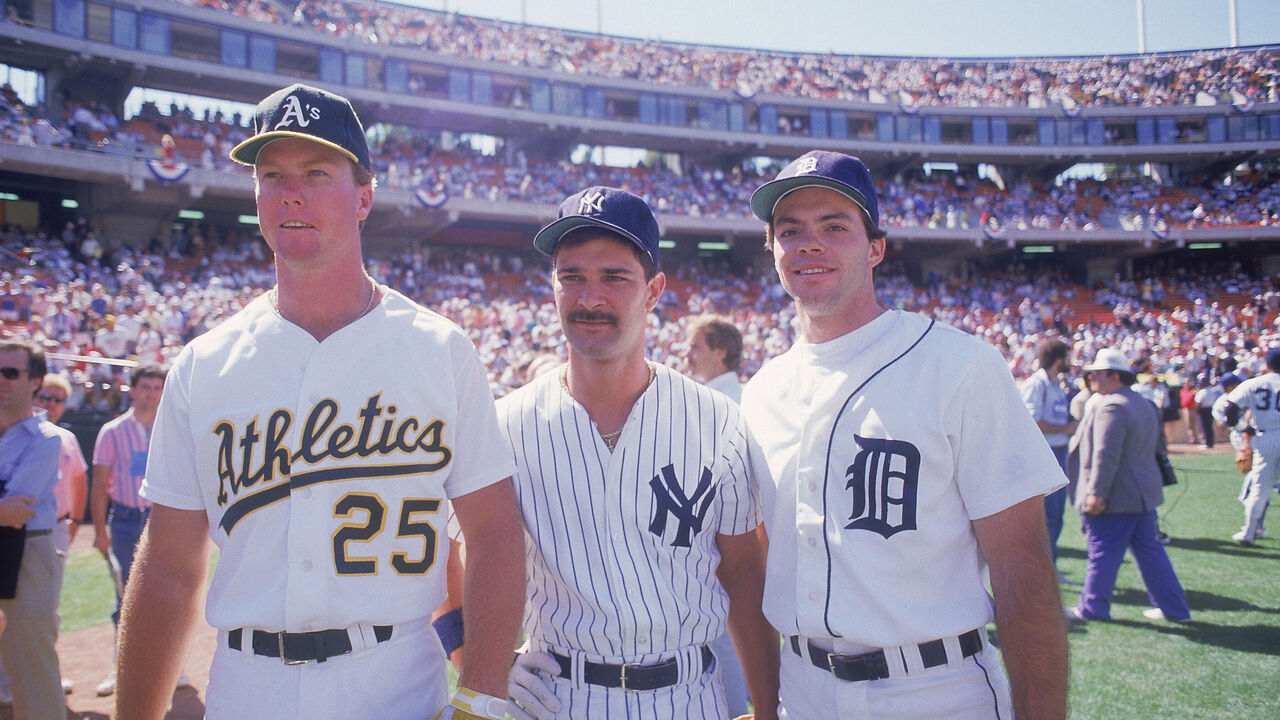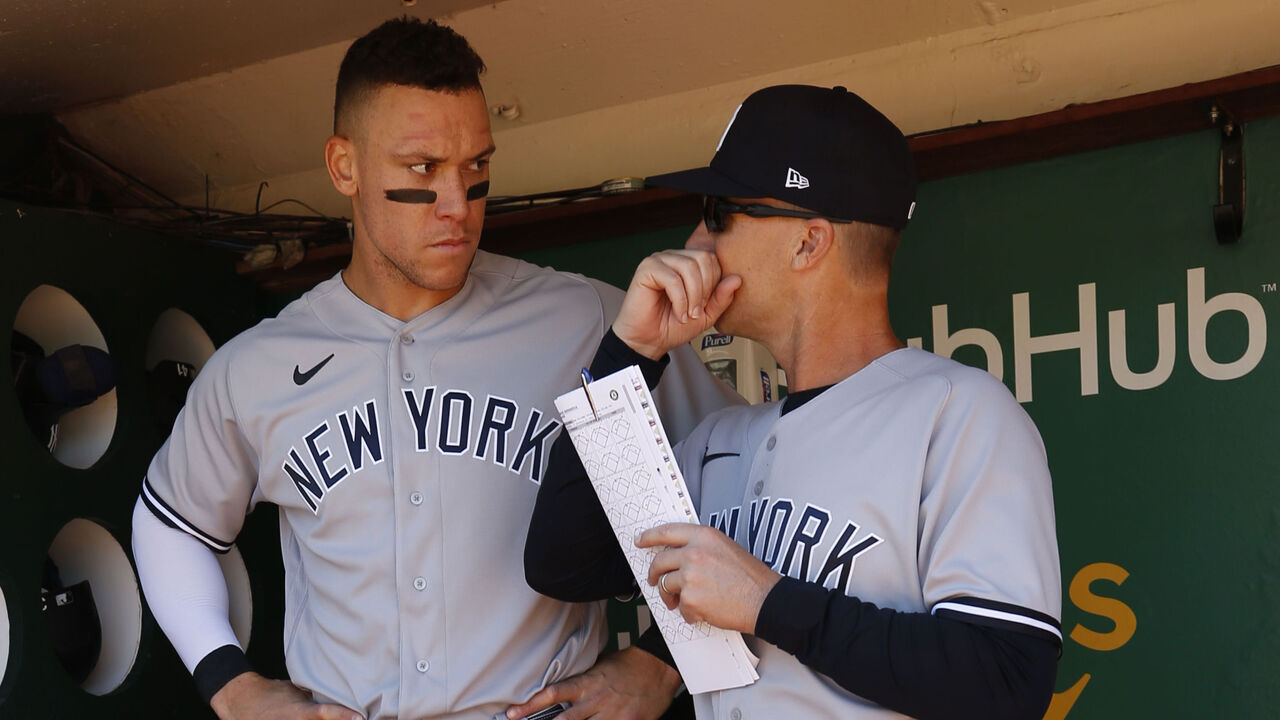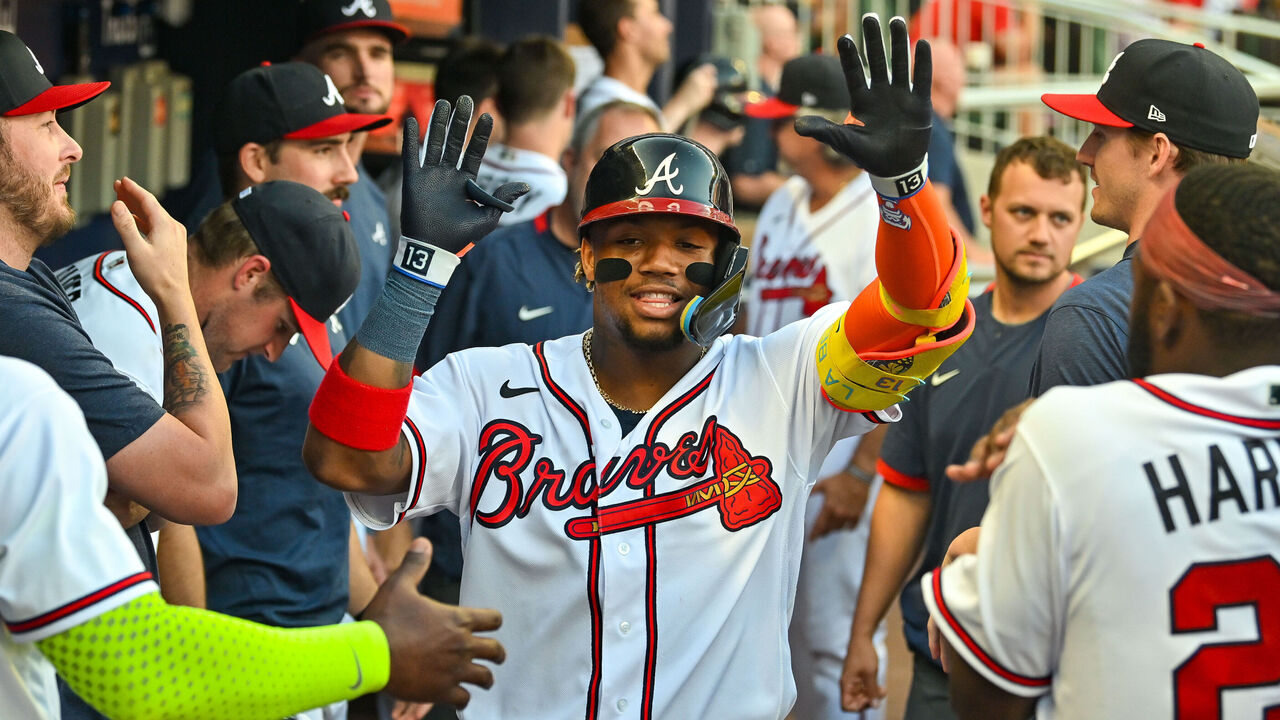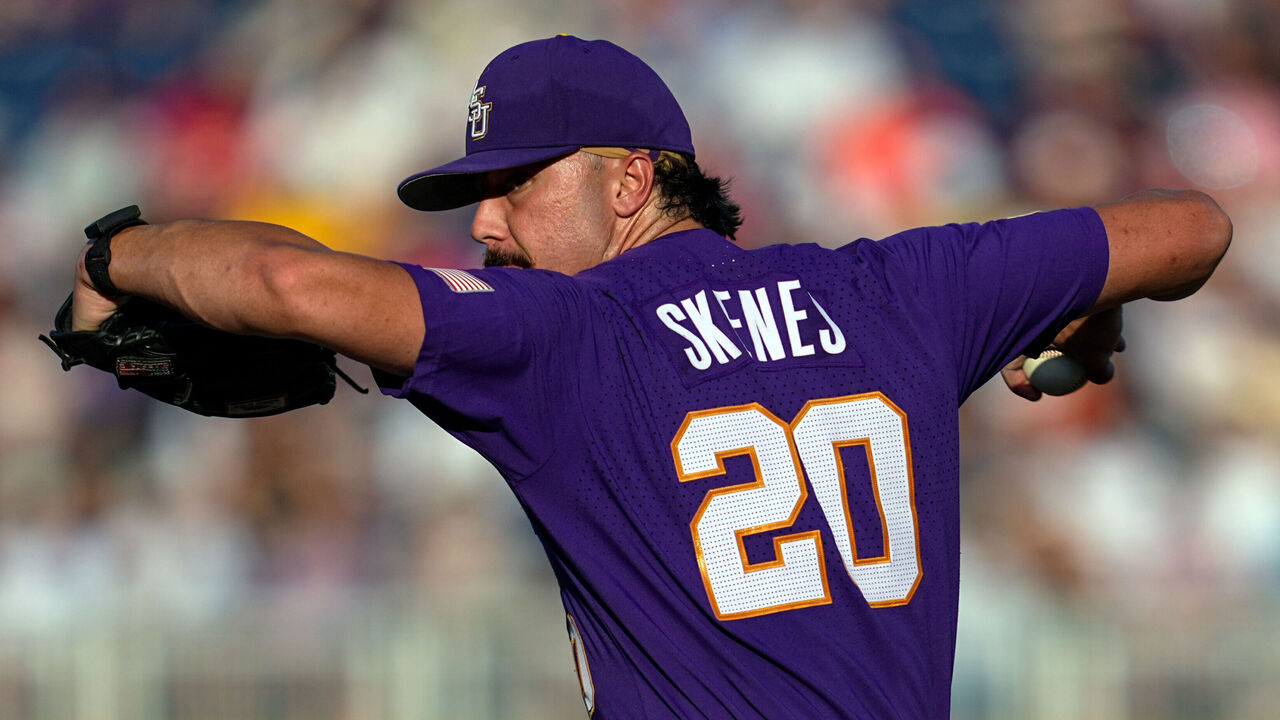How to fix the ASG, a scapegoat in New York, the Pirates' decision, and 6 other observations
Starting Lineup is a bi-weekly collection of reporting, observations, and insights from the MLB beat.
Leading off …
The All-Star Game needs a fix.
Major League Baseball's midsummer showcase simply isn't working by the simplest measure in which it's evaluated: people aren't tuning in to watch it.
There was record-low viewership for Tuesday night's game (7.1 million viewers across all platforms), down 7% from 7.5 million who watched last year. The game has set five new ratings lows in the last seven years.
While 2023 was impacted to some degree by a carrier dispute between network television channels and DirecTV, that's still a significant year-over-year decline, and is a far cry compared to the popularity the game enjoyed years earlier. In 1993, 22 million tuned in to the Midsummer Classic, what baseball considers one of its "jewel" events.
What's behind the decline?
Yes, some of it is tied to how fractured TV audiences are. But strong live sports products (see: NFL) have set record ratings in recent years, so it can't be explained away only by splintered viewership. People still tune in for compelling events.
Little things might be adding up, though.
Many of us long for the days when the players representing their clubs, cities, and fan bases wore their regular-season jerseys. Not only do fans like to see their team and city represented on a national stage, but if nothing else, it makes it easier to identify who's batting and on the field. That's especially important as the game's telecast has become littered with distractions and split screens.

Speaking of the broadcast: it isn't helping, either.
There was a constant interruption of live at-bats Tuesday. Between live mic'd-up players, and the decision to share the screen with elements like in-game conversations between former players David Ortiz, Alex Rodriguez, and Derek Jeter, the action was hard to follow at times. The Ortiz-Rodriguez-Jeter segment was especially mundane, with weather discussions between bites of popcorn, and Jeter wasn't having it.
"Thanks for filling us in on the weather report, David," quipped Jeter live.
Much about Tuesday's game felt forced and unnecessary, including the red-carpet introductions. Yes, the same intros in which Rays All-Stars Wander Franco and Shane McClanahan were accidentally forgotten and left out of.
*ahem*
— Tampa Bay Rays (@RaysBaseball) July 12, 2023
🗣️ FROM THE TAMPA BAY RAYS... WANDER FRANCO & SHANE McCLANAHAN pic.twitter.com/B8ixfGbg9U
Nothing about the production felt organic, authentic, or particularly well executed.
Years ago, the All-Star Game presentation - from attire to introductions - was at once simpler and better, in my opinion.
Intros from the 1996 MLB all-star game at Veterans Stadium pic.twitter.com/KHhSxbfAGb
— John Foley (@2008Philz) July 11, 2023
Yes, these are subjective opinions. There are certainly some in an ever-shrinking audience who enjoyed the broadcast and All-Star uniforms.
But perhaps the biggest issue for declining interest in the game is that it's lost its novelty factor.
The game was most popular before interleague play. It was one of the rare occasions - perhaps the only one in a player's career - in which stars might face each other. It was one of the few platforms, the World Series being the other, where debate over which league was better could be answered.
Some have suggested moving to a U.S. vs. World ASG format, which might offer a boost, but that type of nation-based competition is already filled by the World Baseball Classic.

The game needs some mystery back, which it used to enjoy.
One way to create it again would be to dramatically reduce the interleague slate, perhaps limiting it to one meaningful interleague home-and-home series a year, or eliminating it altogether. Separate leagues created intrigue. It's something I have argued for, in concert with radical geographic realignment. Mystery is a good thing for the All-Star Game and World Series.
(And with multiple wild cards, shouldn't most games be of the intraleague variety?)
Now, reducing interleague play would require an even number of teams in each league, and that's likely to happen in the not-too-distant future.
MLB commissioner Rob Manfred told reporters in Seattle that expansion talks could happen "pretty shortly" after the A's and Rays stadium issues are settled.
Baseball will then face the most significant redrawing of its map since the 1994 change to three divisions in each league.
It'll be an opportunity to add back mystery, and it could help give the All-Star Game a boost.
No. 2: HR Derby also needs an overhaul
Not only is the home-run exhibition difficult to follow for viewers, given the rapid succession of swings and split-screen TV display, but the batters are placing themselves at injury risk.
In the timed-clock derby era, all of the participants appear to suffer some level of fatigue when competing.
Chicago White Sox star and derby participant Luis Robert had to undergo an MRI after feeling calf tightness. It's only a matter of time before someone pulls an oblique muscle or worse. The pace needs to be slowed down to provide an easier viewing experience and lessen batters' injury risks.
Also: It may not be the best idea to have kids shagging fly balls - or line drives - in the outfield, either:
OH MY!!!
— Sportsbook Consigliere (@SportsbkConsig) July 11, 2023
Literally lasers being hit all over the place, and then this happens..
Might be time to get the kids off the field. Just sayin..#HomeRunDerby
pic.twitter.com/gSxKmLQa5i
And in 2021:
Never forget this #HomeRunDerby Moment:
— thomas🏆 (@IiIbabyfan) July 11, 2023
Pete Alonso nailing a kid in the head and the cameraman cutting from the kid getting helped off the field to Alonso dancing pic.twitter.com/YnnWtK3BoX
No. 3: On realignment: A case for 8
With Manfred telling reporters that expanding to 32 teams is potentially on the horizon, MLB will soon make a decision whether it wants eight- or four-team divisions in the future.
With the lack of quality in both Central divisions this year, hopefully MLB considers a move to eight-team divisions. There's never been a sub-.500 team in the postseason in a full season, and four-team arrangements would all but guarantee losing clubs would reach the playoffs in the future.
Further: Eight-team divisions would create a straightforward format where four division winners would receive first-round byes.
No. 4: A complicated trade deadline
The Cincinnati Reds are perhaps the top story in baseball entering the second half, and while their best days may come in future seasons, they should look to take advantage of a weak NL Central.
So, yes, the biggest seller at last year's deadline ought to be one of the most aggressive buyers this year. The club also hopes to return top young pitchers Nick Lodolo and Hunter Greene in August, and general manager Nick Krall would do well to add more rotation options, particularly a player with multiple seasons of club control. The Reds have the farm-system depth to make it happen.
There's just one problem: so many teams still own plausible paths to the postseason due to the expanded playoff format and the state of the Central divisions that there may not be much buying opportunity.
Miami Marlins GM Kim Ng said she's never experienced such little activity this close to a trade deadline:
If you're hoping to see some big moves, it may be a little while before we see action on the trade front.@Marlins | #MakeItMiami | #KimNg pic.twitter.com/0oAJGP3LSX
— MLB Network Radio on SiriusXM (@MLBNetworkRadio) July 13, 2023
If this becomes a new normal, moving the Aug. 1 trade deadline back might make sense.
No. 5: A scapegoat in New York
The Yankees' decision to fire hitting coach Dillon Lawson and replace him with former major-league player Sean Casey - who owns no professional coaching experience - in the middle of the season is a curious one.
Was there an issue with Lawson last season when the club finished second in runs and fourth in wRC+ in the majors? When Aaron Judge hit 62 home runs? What changed is mostly who's in the lineup.

Judge is injured - it's unclear when he might be able to return - and the Yankees have been forced to turn to players like Jake Bauers and Billy McKinney because they lack quality depth.
While it's impossible to know what exactly happened behind the scenes in the Yankees' batting cages, Lawson is part of the new age of thinking and instructing. Casey is unknown. He hasn't played in 15 years. This seems to be a classic case of passing blame down the chain; ultimately, responsibility flows upward.
No. 6: Elly De La Cruz's 6th tool
The Reds' rookie sensation is dazzling with his incredible tool set. He's the fastest player in the majors, with perhaps the strongest throwing arm among position players, and boasts elite power.
But it was his aptitude in stealing home to complete his trip of three steals around the bases before the All-Star break, noticing the pitcher's back was turned, that was so impressive.
Elly De La Cruz steals second, third, and home. ⚾️🔥
— Awful Announcing (@awfulannouncing) July 8, 2023
"HE'S GOIN' HOME... THE THROW... HE STOLE HOME! THE MOST THRILLING MAN IN BASEBALL STOLE SECOND, THIRD, AND HOME!"- John Sadak with the Bally Sports Cincinnati call ⚾️🔥🎙️pic.twitter.com/AdJs2Vb1Lh
It reminded me of what Reds player development chief Shawn Pender said about De La Cruz while watching him in the minors, as part of our profile of the wunderkind:
(De La Cruz) saw where the outfielders were (before the pitch). When the ball got hit, he never hesitated. He took off. Ball landed seven to 10 feet in front of the center fielder and he scores standing up. It doesn't seem like much, but 99% of people would have never moved. They would not have been able to determine whether that ball was going to be caught or not.
I'm sure he's going to make a mistake, be overaggressive, but I have not seen him make a bad read. And for a kid that young, who doesn't have the reps that everyone else does ... (that's) why he has a chance to be really special. He still has so many reps to go before he's really caught up with everyone else.
That aptitude, his sixth tool, suggests it's a good bet De La Cruz can get the most out of his five other gifts.
No. 7: The other amazing thing about Acuna Jr.
Before the season, when we spoke with Acuna Jr. and some around the Braves about the star outfielder's power outage last season, they all felt he would be much closer to his previous form because he was a year further removed from recovering from ACL surgery. They were right.

But Acuna's done more than return to full strength - he's gotten better. He's reduced one of his few flaws with the greatest reduction in strikeout rate in the majors, enjoying a year-over-year 11.7% decline. When one of the most talented players becomes one of its most improved, it's a recipe for an MVP season.
No. 8: Pirates made the right pick
Yes, Paul Skenes - any pitcher - carries more risk than a position player, but as I argued in my Skenes vs. Dylan Crews debate piece, the Pirates simply aren't going to find a ready-made, top-of-the-rotation arm elsewhere. Certainly not in free agency, and highly unlikely via trade or in their own system - at least not in the immediate, forthcoming seasons.
Skenes would be ready to pitch tomorrow for the Pirates if there weren't workload concerns. He belongs with Mitch Keller at the top of the rotation early next year.

The Pirates made an incredible bet on pitching in this draft. Of their 11 top-10-round picks, nine were pitchers.
They haven't done anything like that since their historic draft commitment to pitching in the 2010-11 drafts under former GM Neal Huntington. While that didn't work out that well for the Pirates, it did produce Gerrit Cole, Tyler Glasnow, and Jameson Taillon, who generally did their best work after leaving Pittsburgh. But this is a new era of player development; perhaps this time will be different.
It's also a bet that their position player core of Bryan Reynolds, Oneil Cruz, Ke'Bryan Hayes, and Jack Suwinski, and position-player prospects Henry Davis, Nick Gonzales, and Endy Rodriguez, will be a good enough.
No. 9: Guardians' power outage
Speaking of the draft, Cleveland continues to prize contact hitting over power with the belief that power is easier to improve. This might be rooted in the experience of rostering Jose Ramirez and Francisco Lindor.
But the Guardians have only 164 home runs from their outfielders since 2019, more than 300 fewer than the No. 1 Dodgers (468), and about half of the MLB midpoint. The Guardians are an exemplar in pitching development but they sorely need more power and to focus more upon it in drafting and development.
Stat of the week
8.1%
After nearly continuous decline since 2007, down 15% from 2007 through last season, MLB attendance is up 8.1% compared to last season at the All-Star break. There's no doubt new rules and quicker pace of play are playing a role.
He said it
"We're going to trade people."
- Cardinals GM John Mozeliak
Yeah, it's been that kind of year in St. Louis.
You don't see that everyday
During the All-Star Game, the crowd directed a "Come to Seattle!" chant to Shohei Ohtani, and it's not everyday you get a sales pitch from 50,000 people. And while the Dodgers are perceived as the favorite to sign Ohtani, Seattle would be a compelling landing spot given its young starting rotation and a young superstar in Julio Rodriguez already on the roster.
"Come to Seattle" chants break out for Shohei Ohtani. https://t.co/zXjaeqUuo5 pic.twitter.com/9ZRzY921ZS
— FOX 11 Los Angeles (@FOXLA) July 12, 2023
Ohtani could swing World Series and postseason chances more for a club not based in Los Angeles or New York, and that could be good for baseball.
"I've never experienced anything like that," Ohtani told reporters. "But I definitely heard it."
Travis Sawchik is theScore's senior baseball writer.